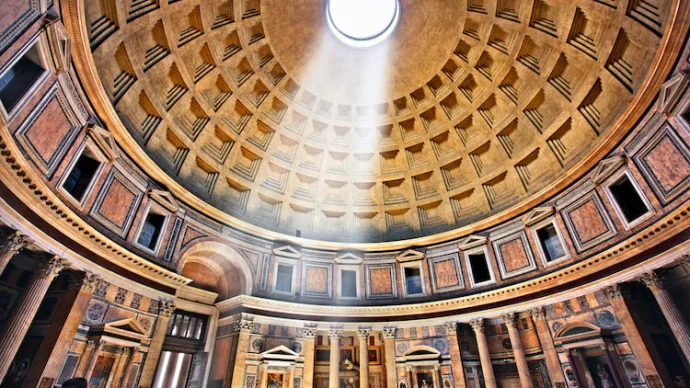
About Temple of Venus and Rome
The Temple of Venus and Rome, known in Latin as Templum Veneris et Romae, in the Roman Forum was built in approximately 135 AD during the reign of the Roman Emperor Hadrian.
Hadrian himself is thought to have heavily influenced the design of this temple, although it was later renovated by the emperor Maxentius after it was damaged in a fire.
Temple of Venus and Rome history
The Temple of Venus and Rome was one of Rome’s most colossal temples.
It was located at the far east side of the Forum Romanum, near the Colosseum. It was dedicated to the goddesses Venus Felix (Venus the Bringer of Good Fortune) and Roma Aeterna (Eternal Rome). The designer was emperor Hadrian. Construction on the temple began in AD 121. Although the temple was officially inaugurated by Hadrian in 135 AD, the building was finished in 141 under Antoninus Pius.
The temple itself consisted of two main chambers (cellae), where the cult statue of the god was, in this case the statues of Venus, the goddess of Love, and Roma, the goddess of Rome, both of them seated on a throne. The cellae were placed symmetrically back-to-back. Roma’s cella was facing west, looking out over the Forum Romanum while Venus’ cella was facing east, looking out over the Colosseum. Each cella had its own line of four columns at the entrance.
The floor was paved in marble in geometric patterns much like the Pantheon. The eastern chamber, visible from the piazza of the Colosseum, still retains the elegant apse and original columns that were unearthed and put back in place by Mussolini.
The temple stood largely intact until the 7th century when emperor Heraclius allowed Pope Honorius I to remove the bronze roof tiles for adorning S. Peter’s basilica. Then, with the destruction of Santa Maria Antiqua in the Forum in 847, San Maria Nova was constructed on the western end of the podium, later joined by a monastery, of S. Francesca Romana.
By the 12th century, it was incorporated into local fortifications adjoining the Palatine hill. From the 14th century to 16th century it was cited as a quarry site, frequently pillaged for marble and travertine.
The site took its current form only in the 1930s, with the construction of the Via dei Fori Imperiali. In more recent years, the podium has become accessible to the public daily, as part of the regular entrance to the Forum-Palatine archaeological park, giving the visitor an exceptional view of the Colosseum and a fantastic opportunity to explore one of Rome’s largest temples.
Temple of Venus and Rome today
Dedicated to the goddesses of love and of Rome, the Temple of Venus and Rome would have comprised two main chambers and would have been an impressive structure. Its remains are found at the far east end of the Forum, near the Colosseum.
Entrance to the temple is included in a visitor’s ticket to the forum and Colosseum.
Getting to the Temple of Venus and Rome
Entrance to the Temple of Venus and Rome is to the left of the Arch of Titus as you face the Colosseum, before leaving the forum.
The Colosseum is situated in the heart of the city of Rome at Piazza del Colosseo. The twin cities are well-connected by an extensive public transport system, allowing you to easily reach the Colosseum, Roman Forum and Palatine Hill.
The Colosseum has its own metro station: Colosseo, on metro line B. To travel by bus, buses 40, 60 and 75 stop at Piazza del Colosseo which is nearby. The Piazza del Colosseo tram stop is located right outside the Colosseum. You can take tram Lines 3 and 8 to reach your destination.
Featured In

Roman Temples
Discover incredible Roman temples you can still visit today, from Baalbek to the Pantheon and more, includes an interactive map of surviving temples from ancient rome.




















